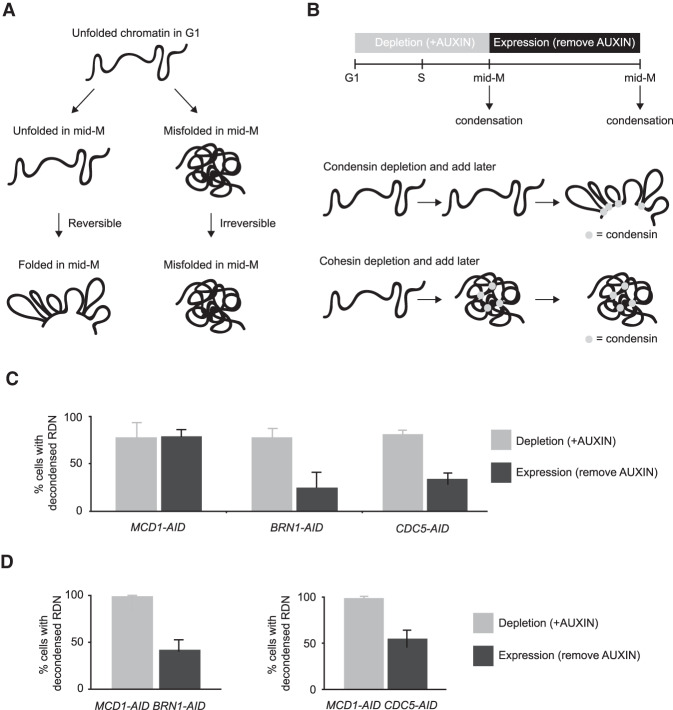Figure 2.
Cdc5p stimulates condensin-dependent RDN condensation. (A) Schematic of defects in condensation. RDN is in a puffed unfolded state in G1. Depletion of condensation factors results in a puffed RDN that can either be in an unfolded state or in a misfolded state. The unfolded state is reversible, once the factor is expressed again the RDN can be folded. Misfolded state is irreversible, even after expressing again the condensation factor the RDN remains misfolded. (B) Schematic of “add later” genetic test setup. (Top) Indicated cultures were arrested in G1 (>95% schmooed morphology), and AID-tagged proteins (Mcd1p-AID, Brn1p-AID, and Cdc5p-AID) were depleted by the addition of auxin. G1 arrest was relieved by resuspending in media with auxin and nocodazole to arrest cells in mid-M. Cells were then resuspended in media containing only nocodazole for 2 h to allow the expression of the previously depleted AID-tagged proteins. (Bottom) Depletion of condensin resulted in unfolded RDN that was folded upon later expression of condensin. Depletion of cohesin resulted in misfolded RDN that stayed misfolded upon later expression of cohesin. (C) Cdc5p depletion results in a reversible unfolded RDN state. “Add later” genetic test results from MCD1-AID, BRN1-AID, and CDC5-AID strains were treated as described in B and scored for RDN condensation. The percentage of cells displaying puffed RDN (decondensed) is quantified. Average of two experiments scoring 300 cells are shown and error bars represent standard deviation. (D) Condensin and Cdc5p promote misfolding of the RDN in the absence of cohesin. “Add later” genetic test results from MCD1-AID/BRN1-AID and MCD1-AID/CDC5-AID strains were treated as described in B and scored for RDN condensation. The percentage of cells displaying decondensed puffed RDN (decondensed) is quantified. Average of three experiments scoring 300 cells is shown and error bars represent standard deviation.

